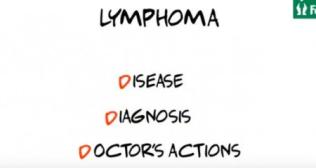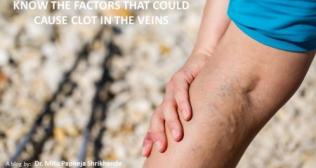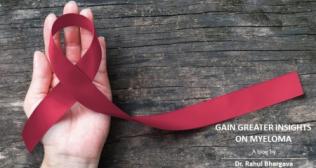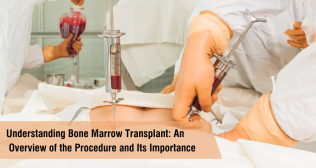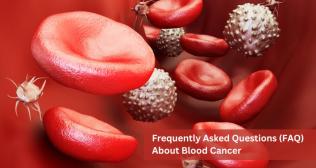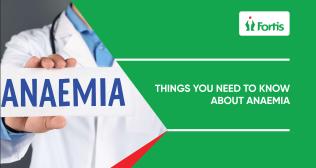
What is Von Willebrand Disease: Types, Symptoms and Treatment
What is von Willebrand Disease (VWD)?
When a blood vessel is injured and starts bleeding, platelets and certain clotting factors form a plug at the site of injury to stop the bleeding. The plasma protein that permits or aids the platelets to adhere to each other and form a clump is called the von Willebrand factor (VWF). When there is a reduction in the plasma levels of or a defect in the von Willebrand factor, the capability of the blood to clot decreases, leading to heavy and continuous bleeding after an injury, termed as von Willebrand disease (VWD). This phenomenon might damage the internal organs and, rarely, might lead to death. This disease is named after the Finnish doctor Erik von Willebrand, who first described this hereditary bleeding disorder.
Who is Impacted by VWD?
The prevalence of VWD is approximately only 1%. It is more frequently detected in women based on the bleeding tendency during menstruation. People with the “O” blood group are more severely affected by this disease.
Understanding the Types of VWD
There are four types of VWD. Of these, types 1, 2, and 3 VWDs are genetically transmitted, while the fourth type, acquired VWD, is not.
- Type 1 VWD: It is observed in 60–80% of VWD patients. Individuals suffering from type 1 VWD have reduced VWF levels in their blood (20–50% less than normal). The symptoms of type 1 VWD are usually mild. Bleeding is the only concern for a type 1 VWD patient who has undergone surgery or had their teeth removed.
- Type 2 VWD: It is observed in 15–30% of VWD patients. Individuals with type 2 VWD have an average level of VWF, but the factor doesn’t function normally. Type 2 VWD is further divided into four subtypes, types 2A, 2B, 2M, and 2N, based on the specific defects in the VWF function. The symptoms are mild to moderate.
- Type 3 VWD: It is observed in 5–10% of VWD patients. Individuals with type 3 VWD have no or very low levels of VWF in their blood. Symptoms are generally severe, including spontaneous bleeding episodes, often in joints and muscles.
- Acquired VWD: This rare type of VWD is found in adults. It usually develops along with an autoimmune disease, such as lupus, a cardiac disease, or some forms of cancer. It can also develop after consuming certain medicines.
Identifying Signs and Symptoms of VWD
Symptoms might commence at any age, ranging from very mild to frequent and severe. The main symptoms of VWD are:
- Regular (more than five a year) or long-lasting episodes of bleeding from the nose
- Heavy bleeding from cuts or injuries, persisting for more than 10 minutes
- Bruising easily, with raised lesions that are more significant than a quarter
- Low iron levels or anemia
- Severe bleeding after a surgery
- Having someone in the family who has one or more of these manifestations
- Family history of a bleeding disorder, such as hemophilia
- Heavy periods in women, also known as heavy menstrual bleeding (having to change a tampon or one pad every 60 minutes) or periods longer than a week
- Heavy bleeding after a childbirth or miscarriage
How is VWD Diagnosed?
A combination of blood tests is employed to diagnose VWD, including a VWF antigen test that examines VWF levels in the blood, tests that estimate clotting time and ability to form a clot, and tests evaluating platelet function. Some of these tests need to be repeated because the levels of VWF can alter due to stress, physical activity, the use of oral contraceptives, pregnancy, and overactive thyroid. Individuals suffering from VWD generally have less than 50% of normal VWF levels in their blood. After a diagnosis of VWD is confirmed, an additional evaluation is performed to assess the type. The best place for patients suffering from bleeding disorders to be diagnosed and obtain treatment is at a hemophilia treatment center (HTC). HTCs provide comprehensive care from skilled hematologists and other professional staff, comprising nurses, physical therapists, social workers and, at certain times, dentists, dieticians, and other healthcare professionals. In addition, HTCs harbor special labs that are useful when more precise VWD testing is warranted.
Treatment and Management
The type of treatment prescribed by healthcare professionals for VWD relies on the type and severity of the disease. Treatment might not be required for minor bleeds. The most common treatment approaches include:
Desmopressin Acetate Injection
This medication is injected into a vein to treat individuals with milder forms of VWD (majorly Type 1). It works by elevating VWF secretion into the bloodstream.
Desmopressin Acetate Nasal Spray
This high-strength nasal spray is used to treat individuals with milder forms of VWD (majorly type 1).
It works by making the body secrete more VWF into the blood.
Factor Replacement Therapy
Recombinant VWF and medications rich in VWF are used to treat individuals with more severe forms of VWD or individuals suffering from milder forms of VWD who do not respond effectively to the nasal spray.
VWD: Long-Term Outlook
VWD is a long-term condition with no cure. The long-term outlook for children suffering from VWD is usually good, and the majority have an average lifespan. Several patients need periodic treatment for bleeding symptoms or specific treatments before dental procedures or surgery. Healthcare professionals generally recommend avoiding aspirin and ibuprofen (NSAIDs), as well as products comprising these drugs, since they may elevate bleeding symptoms in children suffering from bleeding disorders.
Individuals with a family history of bleeding disorders or displaying symptoms of heavy and prolonged bleeding should seek immediate medical attention.
Popular Searches
Hospitals: Cancer Hospital in Delhi | Best Heart Hospital in Delhi | Hospital in Amritsar | Hospital in Ludhiana | Hospitals in Mohali | Hospital in Faridabad | Hospitals in Gurgaon | Best Hospital in Jaipur | Hospitals in Greater Noida | Hospitals in Noida | Best Kidney Hospital in Kolkata | Best Hospital in Kolkata | Hospitals in Rajajinagar Bangalore | Hospitals in Richmond Road Bangalore | Hospitals in Nagarbhavi Bangalore | Hospital in Kalyan West | Hospitals in Mulund |
Doctors: Dr. Rana Patir | Dr. Rajesh Benny | Dr. Rahul Bhargava | Dr. Jayant Arora | Dr. Anoop Misra | Dr. Manu Tiwari | Dr. Praveer Agarwal | Dr. Arup Ratan Dutta | Dr. Meenakshi Ahuja | Dr. Anoop Jhurani | Dr. Shivaji Basu | Dr. Subhash Jangid | Dr. Atul Mathur | Dr. Gurinder Bedi | Dr. Monika Wadhawan | Dr. Debasis Datta | Dr. Shrinivas Narayan | Dr. Praveen Gupta | Dr. Nitin Jha | Dr. Raghu Nagaraj
Specialities: Heart Lung Transplant | Orthopedic |








